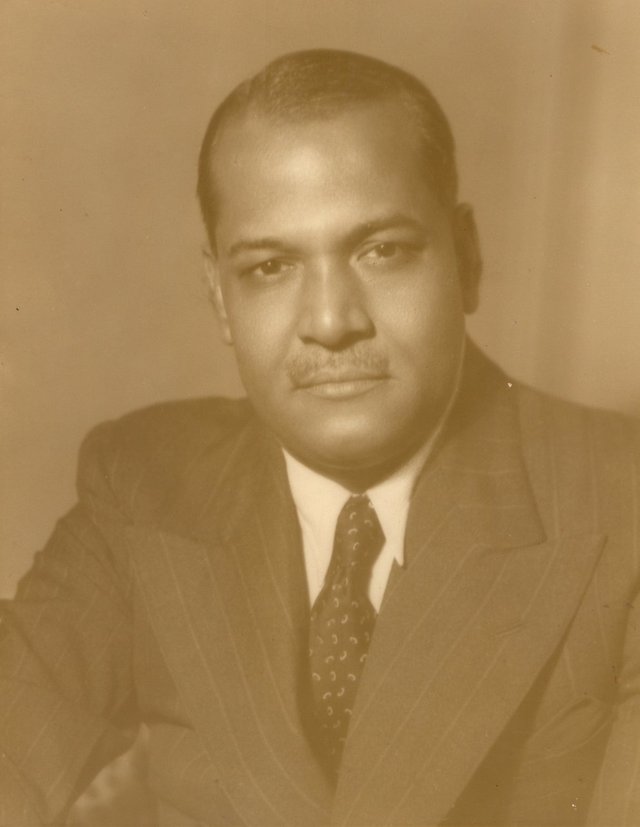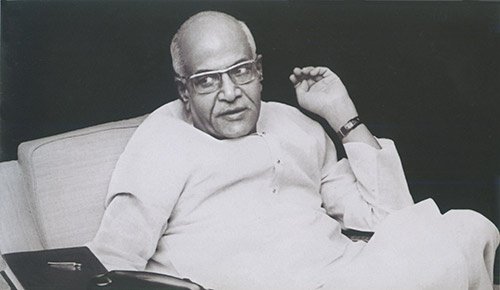The Legacy of Ramnath Goenka: The man who stood for freedom

Ramnath Goenka was a man who could make or break governments and was one of the richest of his time in India. But despite his immense power and wealth, he was a downright simple human being. Being a staunch supporter and follower of Mahatma Gandhi, he moulded his lifestyle as per the Gandhian philosophy. He actively participated in the Indian freedom struggle and used his clout in the media to showcase the atrocities committed by the British against the native population in the country. Goenka spent a good part of his life building a media empire which today is known as The Indian Express Group; which to this date publishes multiple newspapers and magazines in English and multiple Indian regional languages. He was a man with an unshakable sense of purpose and like a born fighter, he continued to fight against corruption, political and financial malpractices till his last breath.
Ramnath Goenka was born in 1904, in the district of Darbhanga in Bihar to a family of Marwari traders who originally hailed from Mandwa in Rajathan. Having lost his mother at a very early age, he was adopted by his paternal aunt who herself did not have a child. He did his initial schooling in Benaras but was sent by his guardians to Kolkata at the young age of 15 to learn the textiles business. However, it was politics that grabbed his interest as he flung himself into Gandhiji’s Satyagraha movement against the British, despite his professional commitments. Though still in his teens, his revolutionary bent of mind and dedication to the freedom struggle, combined with a hardcore business outlook ensured that he got Gandhi’s attention. One of Gandhi’s imperatives in those days was establishing a newspaper dedicated to the freedom movement. This exigency, hugely appealed the Goenka. But having been imprisoned soon after for subversive activities against the British, his life took a different turn.
Following his release from prison in 1922, his worried guardians sent him to Madras to start a new venture as a representative of the Sukhdevdoss Ramprasad Company. There he was appointed dubash, an evaluator - cum - investigator and was entasked with the job of assessing the credibility of Indian trading firms for British suppliers. Around this time, Goenka began trading in stocks and bullion which helped him amass considerable wealth. Despite his business commitments, Ramnath continued to actively assist the nationalist movement. He offered his services to the Hindi Prachar Sabha of Madras, an organisation founded by Gandhi to proliferate the Hindi language in the region. This not only earned him national recognition but also brought him close to the leading figures of India's freedom struggle including Jamna Lal Bajaj, Lala Lajpat Rai, Madan Mohan Malviya, C. Rajagopalachari and Subhash Chandra Bose. He also began actively participating in protests against the government. To win over Goenka, the British government in 1926 nominated him to the Madras Legislative Council as a representative of the business community. However, he decided to side with the opposition due to his political opinion against the government.
On Gandhi's advice, Ramnath Goenka began purchasing debetures of the ailing Free Press Journal of India which owned The Indian Express and the Tamil daily Dinamani. When conditions detoriated further for the Free Press Journal in 1935, its owner Swaminathan Sadanad decided to sell his stake to Goenka, giving the latter complete control over The Indian Express. The takeover involved a substantial investment, requiring Ramnath Goenka to divest his interests and stakes in other business. He also had to borrow a significant amount to complete the deal. Thereon, he concentrated fully on The Indian Express and Dinamani, even to the point of personally delivering the papers to every village, township and newspaper agent where his papers had a readership. He began expanding his business through a series of takeovers and launches. Armed with the of the pen, Goenka resumed his attacks on the British government with renewed vigour.
In 1942, following the launch of the Quit India Movement by Gandhi, the British government issued a gag order on the press which entailed pre-censorship of editorial content to prevent the spread of the nationalist movement. In response, Gandhi called for all nationalistic newspapers to close down in protest, prompting a seething Ramnath Goenka to unleash a scathing attack on the British by publishing his famous ‘Heart Strings and Purse Strings’ article which decried British attempts to muzzle the press and stifle nationalist thought. The incident marked the beginning of Ramnath Goenka’s lifelong crusade to uphold the freedom of the press. In the article he stated:
“We cannot publish news relating to our leaders, to the Congress movement, or relating to anything…not even facts which vitally affect the community unless it is contained in a government communique or in a report from our registered correspondent, blessed by a district magistrate. It would be nothing less than fraud on the public for us to send out a paper containing just that and nothing more…the hard fact of the situation is that if we went on publishing, The Indian Express may be called a paper, but cannot be called a newspaper.”
His role in the Independence movement brought him close to the Indian National Congress, especially Jawaharlal Nehru who would soon be elected as the first Prime Minister of free India. In 1947 when India gained independence, Ramnath Goenka was elected to the Constituent Assembly of India on a Congress Party ticket from Madras.

After India’s independence, Goenka began concentrating on expanding his business further. By the 1970’s his newspapers had a readership of more than 50 lakh individuals. Goenka continued to be an ally of the Indian National Congress after independence and even helped Indira Gandhi in her election campaign in 1966 after the sudden demise of Lal Bahadur Shastri in Tashkent earlier in January that year. Indira won the elections, becoming the third Prime Minister of the country. But barely three years after assuming power, trouble started brewing up in the Indian National Congress and the party split into two - Congress (R) and Congress (O). Goenka opposed the split from the start and even advised Indira against it.
Following the split, he fell out with Indira Gandhi and joined hands with her political opponent Jayprakash Narayan in 1971 after Indira won a second term as the Prime Minister. In 1975, when the Allahabad High Court adjudged Indira Gandhi guilty of electoral malpractices, Jayprakash Narayan began mobilising the nation's youth and began reaching out to intellectuals and making them aware of the political malpractices in the country. Ramnath Goenka decided to publish an English weekly called Everyman's which aimed to apprise Indians of the political developments in the country. As opposed to most contemporary media and publishing outlets of the time, the Indian Express opted for an anti-establishment stance, furthering the opposition's fight to put an end to Indira Gandhi's regime. As political agitations began spreading across India, the government resorted to force which further vitiated the atmosphere and brought most of the opposition parties together under Jayprakash Narayan. Feeling threatened by the ever-growing ranks of the Opposition, Indira Gandhi then took the ultimate step of suspending the Constitution and declaring a National Emergency on June 26, 1975.
Goenka's spar with the government resumed when Indira Gandhi won the elections for a third time in 1980. Goenka was sent a barrage of notices for violating tax and property laws. But eventually a truce came into effect following Indira's assasination in October, 1984. However, when her son Rajiv Gandhi
won the elections by a landslide margin a year later, the squabble began yet again. In 1987, Goenka’s newspapers once again started publishing criticism of the Rajiv Gandhi-led government, with allegations of nepotism and corruption. Goenka’s editorials and cartoons about Rajiv were largely credited with securing the election victory of Vishwanath Pratap Singh in 1989.
Perhaps these very traits also explain his famous fights with his one-time friend Dhirubhai Ambani of Reliance Industries (it actually was the fallout of an ongoing corporate war between Dhirubhai Ambani and Nusli Wadia of Bombay Dyeing). Possibly India’s very first corporate war, it was to later take political overtones and snowball into a major crisis.
It so happened that both Bombay Dyeing and Reliance Industries were aspiring to foray into the promising polyester industry for growth, for which Di-methyl Terephthalate (DMT) was a vital raw material. To source this raw material, Reliance Industries was believed to have manipulated the system—given Dhirubhai Ambani’s close links with politicians and bureaucrats in Delhi—which supposedly helped him derail Bombay Dyeing. This led to an all-out war between the two business houses. Their common friend, Ramnath Goenka, tried time and again to reconcile them, but in vain. Eventually, the war spilled on to the media with The Indian Express publishing a series of exposes against Reliance Industries. Articles were also contributed by Maneck Davar, the editor of Marwar, who then was an independent journalist with the Express Group. There were allegations of Reliance Industries employing unfair trade practices to reap profits and the government not doing enough to penalise them.